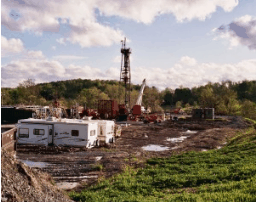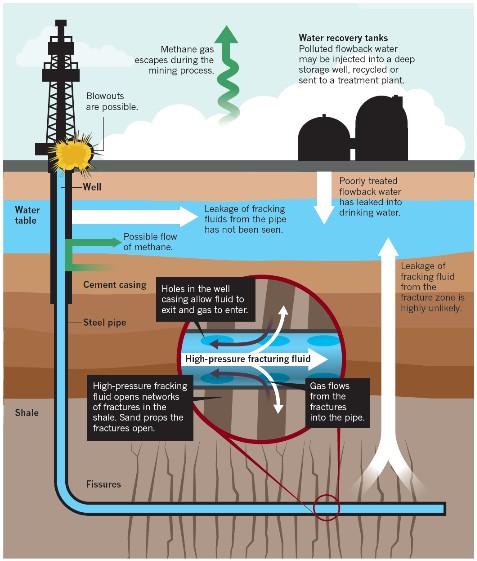
Technological advancement and the shale gas revolution currently underway in the United States has encouraged other countries to seek to extract natural gas trapped in shale rocks or coal seams via the process of hydraulic fracking. This process essentially involves drilling and inserting a pipe deep into the ground and then pumping millions of litres of high pressure water and ‘fracking fluid’ into the shale rock or coal seam, causing it to fracture and releasing stored natural gas where it is then captured for energy production (see below image).

While natural gas is a relatively clean burning fuel, the process of fracking is highly controversial as it risks contaminating nearby water tables or the atmosphere with methane and fracking fluid, which is known to contain a number of carcinogens.
Earlier this year, I watched the US documentary Gasland, which documents in great detail communities in the US adversely impacted by natural gas drilling and, specifically, hydraulic fracking. The film is highly disturbing as it shows the destruction of US farming communities via poisoning of drinking water and the natural environment, often leading to severe health problems for its citizens.
While the documentary turned me off the idea of fracking, I did at least recognise that the documentary maker was likely biased in its criticism (similar to Michael Moore), and probably painted a less favourable picture than might actually be the case.
Last week, a new report was released by the University of Texas and the Environmental Defense Fund (UT-EDF), which found that drilling and fracking for natural gas does not release as much greenhouse gas methane into the air as previously feared.
The study measured fugitive emissions from 190 gas production sites around the US. It found that well completion emissions are lower than earlier studies suggest, but that once leaks from drilling equipment and around the production sites are taken into account, leakage rises to levels just below the US Government’s official estimate. That is, the overall level of methane leakage from gas production was 0.42% of total volume in this latest study, slightly less than the most recent EPA estimate of 0.47%, and well below greenhouse emmissions caused from coal.
The results strongly contradict a well-publicised 2011 study from researchers at Cornell University, which suggested as much as 7.9% of natural gas developed from shale was leaking into the atmosphere, suggesting it was far dirtier than coal.
Obviously, the UT-EDF findings (along with the most recent official EPA estimates) is welcome news for those seeking to mine unconventional gas, since it allays some fears around hydraulic fracturing and its impact on the atmoshere. That said, the study does not address other fracking concerns, such as pollution to the water table.
Therefore, there does still appear to be some need for caution and further research before Australia (and other nations) dive head-first into shale/coal seam gas extraction. The last thing we want to do is poison our prime agricultural lands via fracking in the pursuit of increased gas exports.

